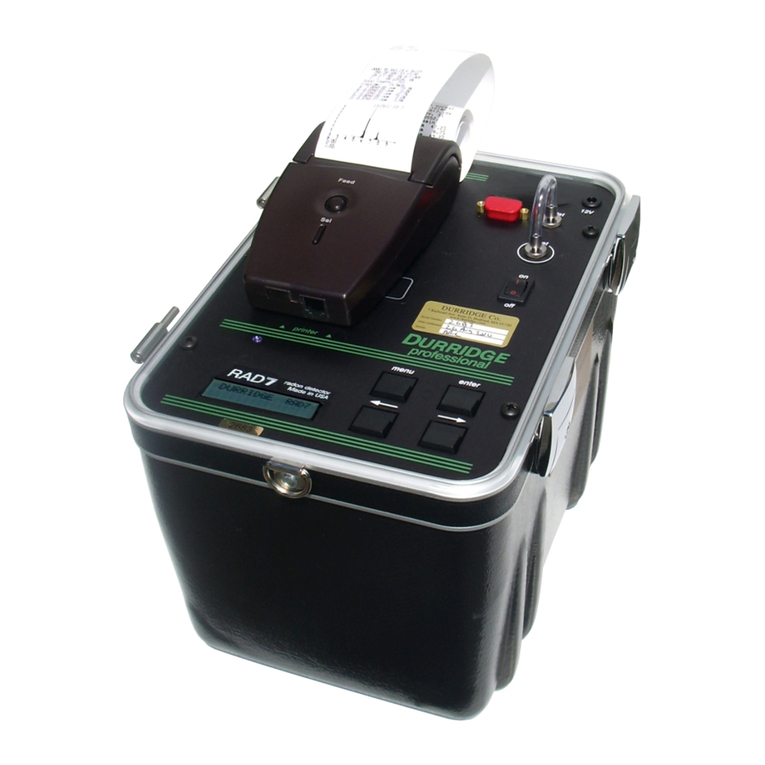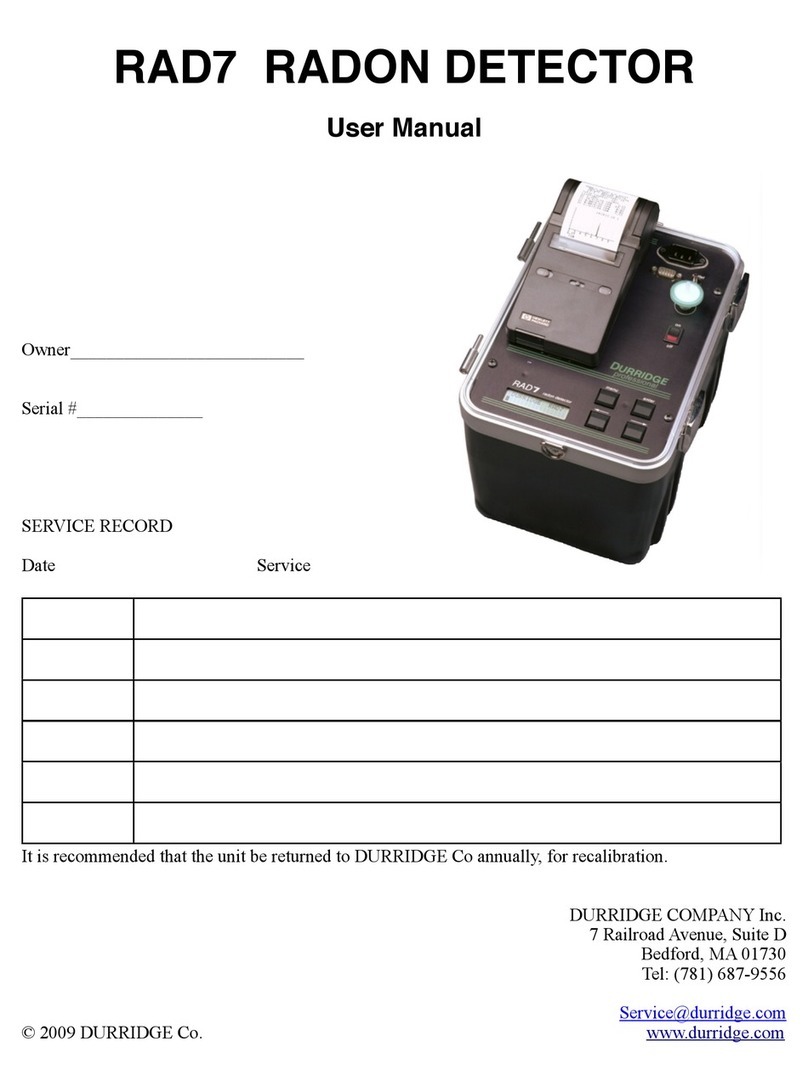protected from the elements, while still allowing
observation of the LCD and print-out, and operation
of the key pad.
e Water Probe may be lowered directly into the
body of water that is to be measured. Alternatively, it
can be placed in a container with the incoming water
released at the bottom of the container and
overflowing or exiting through an outlet at the top.
e water in the container should be completely
refreshed with incoming water at least twice an hour.
1.1.4 Temperature Probe
If you are using a Temperature Probe (sold
separately), it should be inserted into the water as
close as possible to the membrane tubing where the
water-air radon exchange is taking place. e probe
should be plugged into the Temperature Data Logger,
which should be put in its own plastic bag to protect
it, once it has been launched.
1.2 Water Flow and Source
e Water Probe should be fully submerged below
the surface of the water, which should be clean and
free from debris. e flow of water through the Water
Probe should be sufficient to replace the water
around the device on a timescale shorter than its
response time (roughly 2 hours). is condition is
easily met for any flowing body of water, but care
should be taken when planning measurements of
stagnant water.
1.3 Air Flow and Pump Setting
For proper air flow, the RAD7 pump should be set to
Auto. e pump, in Auto operation, pumps for five
minutes at the beginning of every cycle, and then for
one minute in every five throughout the remainder of
the cycle.
1.4 Protocol
1.4.1 RAD7 Protocol, Mode and Cycle
First, please read the RAD7 manual and learn how to
use the instrument for measurement of radon in air.
e RAD7 should normally be operated with mains
power applied, to keep the batteries in a fully charged
condition.
Set the RAD7’s Mode to Auto, which starts the
instrument in Sniffmode (counting 218-polonium
decays only), and switched automatically to Normal
Mode (counting 218-polonium and 214-polonium
decays) aer 3 hours, once secular equilibrium
between 222-radon, 218-polonium and 214-
polonium has been reached. Due to the radioactive
half lives of intermediate radionuclides in the radon
decay chain, the RAD7’s response time in Normal
mode is around 3 hours. Short-term changes in radon
concentration are not usually of interest in long-term
monitoring applications, but in order to minimise the
response time, the RAD7’s Mode may instead be set
to Sniff. In that case, the response time of the entire
apparatus is limited by the exchange of radon from
the water to the air, rather than by radioactive decay.
Note that the RAD7’s sensitivity in Sniffmode is
approximately 50% of its Normal mode sensitivity.
e length of each cycle is chosen by the user. Since
the air-water equilibration takes 2 hours or more,
there is little to be gained by choosing a cycle time
shorter than, say, 1 hour.
1.4.2 Water Probe Protocol
Switch on RAD7. Push the MENU key. Go to:
SETUP, CYCLE, push [ENTER]. Set the cycle time
required (as discussed above).
SETUP RECYCLE to 00, for continuous operation.
SETUP MODE: As discussed above, choose AUTO.
SETUP THORON: Choose OFF.
SETUP PUMP: As discussed above, choose AUTO.
SETUP TONE: Choose what you like.
SETUP FORMAT: Choose what you like, but LONG
format uses more paper. You will probably not need
to use the printer at all, in the field.
SETUP UNITS: Your choice.
SETUP SAVUSER: Push [ENTER]. When it says “Are
you sure?” choose “Yes” and push [ENTER].
1.4.3 User Protocol
You now have your personalized USER protocol
saved. To recall your settings, go to SETUP,
PROTOCOL, USER and push [ENTER]. To make a
change, simply display the parameters to be changed,
make your changes then, once more, go to SETUP
SAVUSER and save them.































